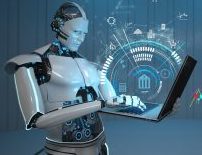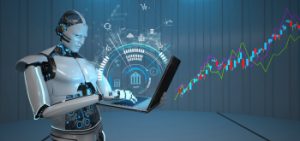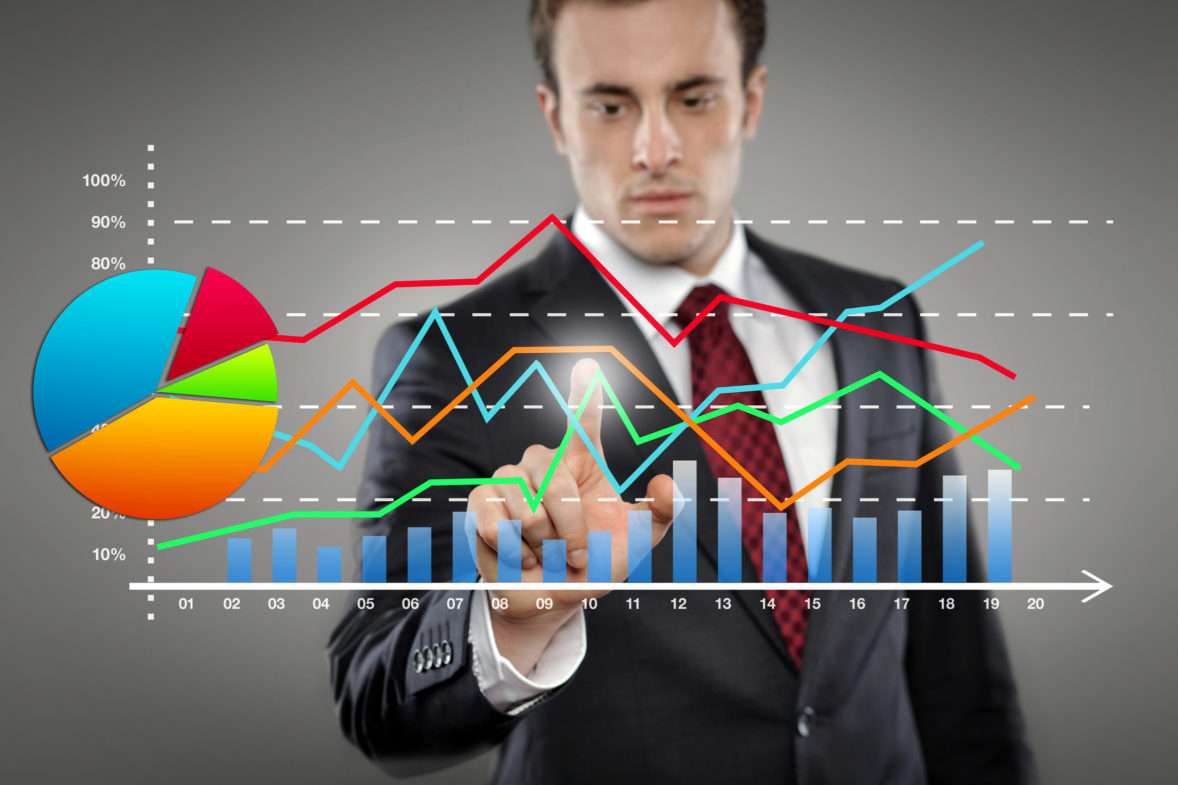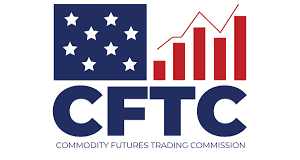
Algorithmic futures trading, also known as algorithmic trading is a form of financial trading that utilizes computer programs to make buy and sell decisions on behalf of traders. The programs use a set of rules and algorithms to analyze market data, identify trends, and execute trades based on predetermined strategies.
What Is Futures Algorithmic Trading?
Futures algorithmic trading is an automated form of financial trading that uses computer programs to execute trades in the futures market. These computer programs use complex algorithms and strategies to analyze market data and identify trends in real-time. Once a trade opportunity is identified, the algorithm will execute the trade automatically, without the need for human intervention.

The algorithms used in futures algorithmic trading are designed to analyze a wide range of market data, including historical price data, news events, and real-time market data. This allows traders to make more informed trading decisions and take advantage of market opportunities as they arise.
Futures algorithmic trading is often used by professional traders and institutional investors who require fast, efficient trading capabilities. The speed and efficiency of algorithmic trading make it possible for traders to execute trades at lightning speeds, taking advantage of even the smallest market fluctuations.
One of the key benefits of futures algorithmic trading is the ability to remove emotional biases from the trading process. Human traders can be influenced by a range of emotional factors, including fear, greed, and panic. Algorithmic trading systems, on the other hand, make trading decisions based solely on data and algorithms, without being swayed by emotions.
Strategies
There are several algorithmic trading strategies that are commonly used in the futures market. Each of these strategies has its own unique approach to trading and can be used to achieve different trading goals.
Momentum Trading
Momentum trading is a popular algorithmic trading strategy that involves buying securities that are trending upward in price and selling securities that are trending downward in price. This strategy is based on the idea that securities that are already trending in one direction are likely to continue moving in that direction.
Momentum trading algorithms use technical analysis tools like moving averages and trendlines to identify securities that are experiencing upward or downward momentum. Once a security has been identified as having momentum, the algorithm will enter a long or short position, depending on the direction of the trend.
Mean Reversion Trading
Mean reversion trading is a strategy that involves buying securities that are trading below their average price and selling securities that are trading above their average price. This strategy is based on the idea that prices tend to revert to their average over time.
Mean reversion algorithms use statistical analysis tools to identify when a security is trading significantly above or below its average price. Once a security has been identified as being overvalued or undervalued, the algorithm will enter a long or short position, depending on the direction of the deviation.
Arbitrage Trading
Arbitrage trading is a strategy that involves buying and selling related securities simultaneously to take advantage of price differences between them. This strategy is based on the idea that securities that are related to each other should have similar prices.
Arbitrage algorithms use statistical analysis tools to identify when related securities are trading at different prices. Once a pricing difference has been identified, the algorithm will enter a long position in the undervalued security and a short position in the overvalued security.
High-Frequency Trading
High-frequency trading is a strategy that involves making trades in fractions of a second to take advantage of small price movements in the market. This strategy is based on the idea that even small price movements can be profitable if executed at high speed and high volume.
High-frequency trading algorithms use advanced technology and ultra-low latency connections to execute trades at lightning speeds. These algorithms are often used by institutional investors and hedge funds that require fast, efficient trading capabilities.
Who is Algorithmic Trading for?
Algorithmic trading is used by a wide range of market participants, including individual traders, institutional investors, and hedge funds. Algorithmic trading can be particularly beneficial for traders who require fast, efficient trading capabilities or who need to execute trades at high volumes.
Institutional investors and hedge funds are particularly active in algorithmic trading, as they often require the ability to execute trades at high speeds and high volumes. These traders also tend to have access to more advanced technology and data analysis tools, making it easier to develop and implement sophisticated algorithmic trading strategies.
Individual traders can also benefit from algorithmic trading, particularly those who are trading in the futures market. Algorithmic trading can help individual traders to execute trades more efficiently and accurately, without the need for constant monitoring and manual intervention.
Benefits
There are several benefits to using algorithmic trading in the futures market. These benefits include:
Increased Efficiency
Algorithmic trading can help traders to execute trades more quickly and efficiently than manual trading. This can help traders to take advantage of even small price movements in the market, increasing the potential for profit.
Reduced Emotion
Algorithmic trading removes emotional biases from the trading process, helping traders to make more rational trading decisions. This can help to reduce the risk of making impulsive or emotional trading decisions.
Improved Accuracy
Algorithmic trading systems are able to analyze vast amounts of market data and identify trading opportunities with a high degree of accuracy.
Data to Use
To develop effective algorithmic trading strategies for futures markets, traders need access to reliable and high-quality data. This data should include market data such as price and volume data, as well as news and social media sentiment data that can provide insights into market sentiment.
Traders can obtain market data from a variety of sources, including exchanges, market data vendors, and data brokers. News and social media sentiment data can be obtained from specialized data providers that analyze news and social media feeds in real-time.
Risks and Challenges
Algorithmic trading can offer significant benefits to traders, but it is not without risks. One of the biggest risks of algorithmic trading is that algorithms can malfunction or be vulnerable to cyber attacks, which can result in significant financial losses.
Another risk is that algorithmic trading strategies can become over-optimized or overfit to historical data, leading to poor performance in live trading environments. Traders must carefully monitor and update their algorithms to ensure that they remain effective in changing market conditions.
Additionally, algorithmic trading can exacerbate market volatility and lead to market crashes if a large number of algorithms execute trades in the same direction at the same time.
Technical Requirements
To engage in algorithmic trading in the futures market, traders must have access to a high-speed and reliable trading platform. This platform should support the development and implementation of algorithmic trading strategies and provide access to reliable market data.
Traders also need to have a strong understanding of programming languages like Python or C++ to develop and test their algorithms. Additionally, traders must have the necessary technical skills to monitor and update their algorithms as market conditions change.
Examples
There are many examples of successful algorithmic trading strategies in the futures market. For example, a momentum trading algorithm could identify an upward trend in crude oil prices and enter a long position in crude oil futures. Alternatively, a mean reversion algorithm could identify an undervalued stock index futures contract and enter a long position.
High-frequency trading algorithms can also be successful in the futures market, allowing traders to execute trades at high speeds and high volumes. However, these strategies require specialized technology and advanced data analysis capabilities.
Future of Algorithmic Trading
The future of algorithmic trading in the futures market is likely to be shaped by advances in technology, data analysis, and artificial intelligence. Traders can expect to see the development of more sophisticated algorithms that are able to analyze and process vast amounts of data in real-time.
Additionally, algorithmic trading may become increasingly accessible to individual traders, as technology and trading platforms become more user-friendly and affordable.
However, traders must also be aware of the potential risks of algorithmic trading and take steps to mitigate these risks. As the use of algorithms in trading continues to grow, regulators are likely to increase their scrutiny of algorithmic trading practices to ensure market stability and integrity.
Algorithmic Trading Systems
Algorithmic trading systems are automated systems that allow traders to execute trades based on pre-determined rules and parameters. These systems use complex algorithms to analyze market data and execute trades without human intervention.

Algorithmic trading systems are becoming increasingly popular in the futures market, as they offer many benefits over traditional trading methods. These benefits include greater speed and efficiency, increased accuracy, and the ability to process large amounts of data in real-time.
Traders can develop their own algorithmic trading systems or use third-party software and platforms to implement their strategies. Some popular platforms for algorithmic trading in the futures market include NinjaTrader, MultiCharts, and TradeStation.
Is Futures Algorithmic Trading Right for You?
Deciding whether futures algorithmic trading is right for you depends on a variety of factors, including your trading goals, risk tolerance, and technical skills.
If you are an experienced trader with a strong understanding of programming languages and technical analysis, algorithmic trading may be a good fit for you. However, if you are a novice trader or lack the technical skills necessary to develop and implement trading algorithms, algorithmic trading may not be the best choice.
It is also important to consider the potential risks of algorithmic trading and ensure that you have the necessary resources and support to manage these risks. This may include access to high-quality data, reliable trading platforms, and technical support.
Algorithmic Trading News
Staying up-to-date on the latest developments in algorithmic trading is important for traders who are interested in this area. There are many resources available for algorithmic trading news and information, including industry publications, trading forums, and social media groups.
Some popular sources for algorithmic trading news include the Automated Trader, the Algorithmic Trading Digest, and the CTA Intelligence. Traders can also find news and discussion about algorithmic trading on social media platforms like Twitter and LinkedIn.
Additionally, many trading platforms and software providers offer regular updates and news about algorithmic trading, as well as support and resources for traders who are interested in this area.
The Role of Machine Learning in Algorithmic Trading
Machine learning has become an increasingly important tool in algorithmic trading. By using advanced algorithms and statistical models, machine learning can analyze large volumes of data and identify patterns and trends that would be difficult or impossible for humans to detect.
In the context of algorithmic trading, machine learning can be used to improve the accuracy and effectiveness of trading algorithms. For example, machine learning algorithms can be trained to predict market trends and identify potential trades, or to analyze news and social media data to identify sentiment and market sentiment.
Algorithmic Trading and High Frequency Trading
High-frequency trading (HFT) is a subset of algorithmic trading that focuses on executing trades at incredibly high speeds, often measured in microseconds. HFT firms use complex algorithms and specialized hardware to analyze market data and execute trades with minimal latency.
While HFT has become controversial in recent years due to concerns about market manipulation and unfair advantages for large institutional traders, it remains a popular approach in the futures market. HFT can offer traders significant advantages in terms of speed and efficiency, but it also requires significant resources and technical expertise.
Regulatory Issues in Algorithmic Trading
Algorithmic trading has come under increased scrutiny in recent years due to concerns about market manipulation and the potential for technology-driven crashes. As a result, regulators have taken a more active role in overseeing algorithmic trading and implementing rules and regulations to ensure fair and transparent markets.
In the US, for example, the Securities and Exchange Commission (SEC) has implemented a number of rules related to algorithmic trading, including requirements for risk controls, pre-trade risk management, and post-trade surveillance. Similarly, in Europe, the Markets in Financial Instruments Directive (MiFID II) has introduced new regulations related to algorithmic trading, including requirements for algorithmic traders to be registered with national authorities and to provide detailed information about their trading activities.
The future of algorithmic trading is likely to be shaped by a number of trends and developments, including advances in technology, changing regulatory environments, and evolving market conditions.
One potential trend is the increasing use of machine learning and artificial intelligence in algorithmic trading. As these technologies continue to develop, they may offer traders new and more sophisticated ways to analyze market data and execute trades.
Another potential trend is the rise of decentralized trading platforms and protocols. These platforms, which are based on blockchain technology, offer traders new ways to trade and manage assets in a more secure and transparent manner.
Overall, the future of algorithmic trading is likely to be characterized by continued innovation and evolution, as traders seek new and more effective ways to navigate the complex and rapidly-changing world of the futures market.
Algorithmic Trading and Behavioral Finance
Behavioral finance is the study of how psychological factors influence financial decisions and markets. In the context of algorithmic trading, behavioral finance can be used to develop more effective trading algorithms that take into account human biases and emotions.
For example, some traders may be more likely to take risks when they are feeling confident or optimistic, while others may be more cautious when they are feeling anxious or uncertain. By incorporating these psychological factors into trading algorithms, traders can potentially improve the accuracy and effectiveness of their strategies.
Algorithmic Trading and Big Data
Big data refers to the massive amounts of structured and unstructured data that are generated every day by businesses, individuals, and other sources. In the context of algorithmic trading, big data can be used to improve the accuracy and effectiveness of trading algorithms by providing a more comprehensive view of market conditions and trends.
For example, big data analytics can be used to analyze news and social media data to identify trends and sentiment, or to analyze financial data from multiple sources to identify correlations and patterns.
Algorithmic trading is a powerful tool for traders in the futures market, providing greater efficiency, accuracy, and automation. However, traders must carefully consider the potential risks and technical requirements of algorithmic trading and ensure that they have the necessary skills and resources to develop and implement effective trading algorithms. By staying up-to-date on the latest news and trends in algorithmic trading, traders can maximize the benefits of this approach and stay ahead of the curve in the ever-evolving futures market.
See Our – Why use an Automated Trading System ATS
See Our Limited Time “Promo Offer” and see how you can become our Client!














